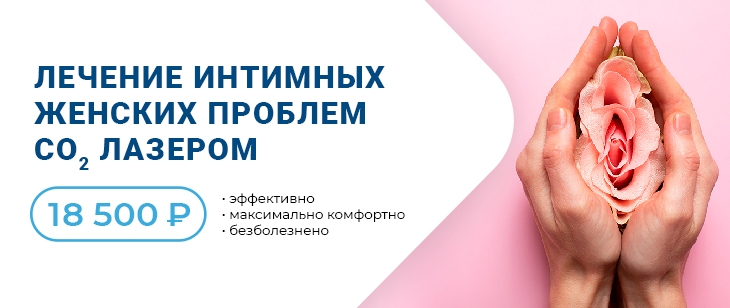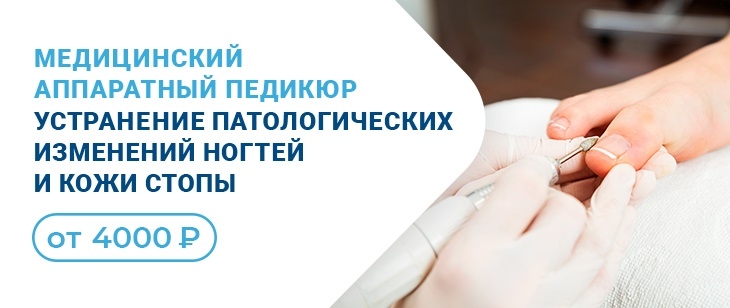Атипичные клинические проявления гепатобилиарной патологии
Представляем вашему вниманию статью врача терапевта-кардиолога, Доктора медицинских наук, Катюхина Валерия Николаевича на тему: "Атипичные клинические проявления гепатобилиарной патологии" на английском языке.
Atypical Clinical Manifestations of Hepatobiliary Pathology
Katyukhin VN* and Ilchishina TA
REAVIZ University, St. Petersburg, Russia
*Corresponding Author: Katyukhin VN, REAVIZ University, St. Petersburg, Russia.
Received: May 12, 2023; Published: July 24, 2023
Hepatobiliary pathology has always been and remains one of the most difficult to diagnose, although numerous instrumental and labo- ratory methods of examination of patients are used in modern clinics to verify the diagnosis. They should be listed with some reservations. So, endoscopic methods are well developed, but they always have a variety of technical difficulties, are not always applicable in each spe- cific case due to the high cost of the equipment used. Radiological methods are widely available, but they are characterized by low sensitiv- ity and specificity only with an irrefutable clinical picture. The method of endoscopic retrograde cholangiopancreatography has many side effects and is contraindicated in cholestasis in the gastrointestinal tract and bile ducts. Magnetic resonance cholangiopancreatography reduces the risk of possible complications due to noninvasiveness, but has significant drawbacks, since it is impossible to identify stones smaller than 2 mm and obtain information about the degree of narrowing of the duct when using it. The data of modern ultrasound diag- nostic devices significantly depend on the technical skills of the operator, pronounced flatulence and obesity of the patient, the degree of adhesions in the abdominal cavity. These disadvantages are practically devoid of endoscopic ultrasound and magnetic resonance imaging techniques, but they are limited due to the cost of procedures. Dynamic cholescintigraphy and staged chromatic duodenal probing signifi- cantly expand the possibility of verifying the diagnosis, but they are also not used in all clinics. Morphological examination after puncture liver biopsy is considered the gold standard of diagnosis, but it is not always applicable. The possibilities of diagnostic search are signifi- cantly expanded by laboratory methods, since in various cases of hepatobiliary pathology, clinical syndromes are almost simultaneously present. These are: the phenomena of cytolysis, cholestasis and jaundice, immune inflammation, liver failure and portal hypertension of varying degrees. Nevertheless, all of these various combinations of disease variants and their leading pathogenetic mechanisms lead to clinical masks of pathology of the hepatobiliary zone, which lead to incorrect diagnoses and inadequate medical care.
Cardiological mask of biliary pathology: The classical description of this suffering was first presented back in 1883 [2] by Professor of the Imperial Medical and Surgical Academy of Russia Sergey Petrovich Botkin: “... Often cholelithiasis is expressed in phenomena focusing mainly in the heart area... The patient will complain of attacks of pain in the side of the heart, coming with a clear change in its function, arrhythmia, difficulty breathing and T. D., in a word, with a clear picture of angina… Such an attack lasts 8 - 10 hours instead of several min- utes, and after several such attacks, the patient suddenly turns yellow...”. Such situations allowed us to identify several clinical variants of diseases: cholecystocardial, cholecystocoronary, hemodynamic and arrhythmic. We observed the occurrence of atypical chest pains with signs of ischemia on the ECG, respectively, of the posterior wall of the left ventricle and the blood pressure level of 180/90 mmHg, which occurred in the morning after a hearty dinner in a 40-year-old man. The absolute absence of any previous complaints of the patient was noted. After sublingual administration of kapoten at a dose of 25 mg, the blood pressure level changed by 160/110 mmHg, and an urgent ultrasound examination of the liver made it possible to make an accurate diagnosis of a valve stone at the mouth of the LC. Cardiologi- cal symptoms in patients with biliary pathology were noted in 24.5% of cases of chronic stone-free cholecystitis and may occur without abdominal pain. Nevertheless, if a pathology of the hepatobiliary zone is suspected, the characteristic pain points should be carefully palpated. They are well known and are divided into anatomical and topographic zones:
- Bubble point;
- Epigastric region;
- Choledocho-pancreatic zone;
- Soreness in the area of the right proc. Acromion;
- Pain zones near 8 - 11 thoracic vertebrae;
- Blade point;
- The point of the diaphragmatic nerve at the point of departure of the right sternocleidomastoid muscle from the clavicle.
Right-sided (irritative) vegetative syndrome was described during palpation of the spine as a consequence of dystrophic and degen- erative changes of reflex genesis in the intervertebral discs. In such cases, due to prolonged excitation of the receptors of the autonomic nervous system in the underlying tissues, focal soreness can be determined, completely unrelated to the pathology of the liver and biliary tract.
The cumulative risk coefficient was 1.23 (95% confidence interval 1.16 - 1.30) for fatal and non-fatal events without gender differ- ences. When analyzing the relationship of the consequences of cholecystectomy for the occurrence of cardiovascular complications, the risk coefficient was 1.41 (95% with a confidence interval of 1.21 - 1.64). The exact mechanisms of association of these pathologies are unknown. The authors suggested a possible role of the intestinal microbiota and outlined further research in this direction [4].
Psychosomatic disorders in biliary pathology can be detected in 86% of patients versus 22 - 33% of cases in somatic pathology. The initial violations of the psychological status of the patient significantly aggravate the course and outcome of the liver diseases that have arisen [5]. Depression is especially important as a provoking factor of unbearable pain and subsequent complications [6]. Perhaps these conditions potentiate the general suffering of the patient. Study participants reported feeling anxious (9%), real depression (8%), past sexual trauma (18%) or physical abuse (10%). Women have a higher risk of depression. Half of the patients were diagnosed with other functional disorders against this background, and first of all (34%) irritable bowel syndrome. The psychological portrait of a patient with biliary pathology most accurately reflects the long-standing psychological characteristics: Greek. “Chole” → “choleric”, “Bile” → “bile char- acter”. A bilious person is usually irritable, angry. Patients are picky, conflicted, quarrelsome, suspicious. Experts note their hypochondria, depression, psychotic reactions, phobias, asthenic states. Premenstrual tension syndrome is often associated with young women with biliary pathology. They tend to demand unnecessary diagnostic procedures from the doctor, prescribing certain treatment, which they perform with reluctance or do not perform at all, but at the same time they are dissatisfied with both the doctor and the results of treat- ment. Therefore, it is necessary to take into account the peculiarities of communication between the doctor and patients with functional biliary pathology. During the consultation, it is necessary to take into account that the success of treatment is increased due to a good relationship between the doctor and the patient. The quality of consultation and patient satisfaction are determined by:
- Empathy (empathy);
- Avoiding professional jargon;
- The honesty of the forecast and all advice;
- Acknowledging that you don’t have all the answers.
The doctor will not have enough 10 - 15 minutes to receive such a patient and should count on a longer contact [7]. But if you take the time to consider all these factors during the first visit when making a diagnosis of a functional disorder, a competent and psychologically trained doctor “will save time (your own) and money (of the patient) on future visits...”. The following useful questions are recommended (Table 2) during the consultation:
|
Questions |
The purpose of the question posed |
|
Can you tell me your story from the beginning? |
It may have psychotherapeutic significance for the patient. |
|
What (in your opinion) is it happening to your health? |
It helps to identify the Patient’s distorted ideas about their health. |
|
If we could change one thing in your well-being, what would it be? |
This helps you focus on the main factor for the patient. |
|
What would you do in your life if these symptoms de- creased? |
This helps to determine the incentive for recovery. |
|
Is there anything else in your life that is bothering you? |
This helps to identify psychosocial problems that contribute to the onset of symptoms and which may need to be addressed by a psychotherapist. |
Table 2: Suggested questions of the doctor when collecting the anamnesis of a patient with hepatobiliary pathology.
During the subsequent examination of the patient, unexpected diagnoses and clinical findings may be revealed that do not correspond
to the initial presentation of the doctor after the physical examination.
Giant stones of the ZHP: Rarely, but gallstones larger than 5 centimeters can be diagnosed as unexpected findings. They can be localized in the gastrointestinal tract, biliary tree, intestines. They are more often mixed in composition (cholesterol and bilirubin). More often (2:1 compared to men) they are determined in women, usually this condition is associated with diabetes mellitus and in 60 - 80% the forma- tion of gallstones is asymptomatic. However, with a thorough study of the anamnesis, it is possible to identify very moderate previous symptoms in the form of recurrent biliary pain, exacerbations of chronic cholecystitis with minor obstruction, stretched over time. Such cases require surgical treatment even in the absence of a clinical picture [8]. The operation of choice is laparoscopic cholecystectomy, since when migrating through the fistula between the gallbladder and the duodenum 12 or small/large intestine, they can cause gallstone ileus. According to the same authors, gallstones over 3 cm have a relative risk of gallbladder cancer.
Accidental” gallbladder cancer: According to statistics, they make up from 0.19% to 5.5% of all cholecystectomies with a ratio of women to men of 14:1. At the time of diagnosis, usually [9] such findings are asymptomatic and in 80% it is detected accidentally during routine histological evaluation. Cases of aggressive cancer with a poor prognosis should be clarified. This is determined by the following risk fac- tors: “porcelain” LC, polyps over 1.5 cm, the presence of a long-term GI, age over 50 years, the occurrence of empyema, genetic predisposi- tion, geographical and ethnic factors. Women are also the most predisposed to such options.
Currently, there is a tendency among pathologists to move from the current practice of routine histopathological evaluation of all LC samples to a more selective approach [10]. With a thorough microscopic and histological examination of 14,731 patients with macroscop- ically abnormal-looking LC (abnormal samples), the incidence of malignant pathology was 0.14%. Based on the results of such a study, a selective histological assessment can be recommended when analyzing samples in patients older than 50 years, after emergency surgery or surgery with a difficult dissection, leading to a transition from laparoscopy to open surgery.
The practitioner should take into account that complaints of bitterness in the mouth do not always determine the mood to detect hepatobiliary pathology in a patient [12]. The causes of bitterness in the mouth are numerous and this must be taken into account in each case. Such a symptom is determined by the general condition and habits:
- Breathing through the mouth,
- Dehydration of the body,
- Dry mouth,
- Pregnancy,
- Smoking tobacco and vapes,
- Taking herbal remedies (infusion and decoction of St. John’s wort, sea buckthorn oil),
- Products (cedar and almonds).
The basis of disturbing sensations may be diseases and conditions not associated with damage to the gastrointestinal tract, namely:
- Allergies and stuffy nose,
- Upper respiratory tract infection (sinusitis, acute respiratory infections, flu, pharyngitis),
- Nasal polyps,
- Salivary gland infection,
- Sjogren’s syndrome, vitamin B12 and zinc deficiency,
- Gingivitis, glossitis,
- Intoxication with mercury, lead, copper.
Many medications can change perception to a feeling of bitterness in the mouth:
- Acetylcholinesterase inhibitors in the treatment of Alzheimer’s disease,
- Bronchodilators and bronchospasmolytics in the treatment of bronchial asthma and chronic nonspecific lung diseases,
- Captopril in the treatment of hypertension,
- Individual antibiotics, for example clarithromycin,
- Chemotherapy and drugs such as vinblastine, vincristine and procarbazine,
- Griseofulvin used in fungal skin infection,
- Lithium preparations in the treatment of manic psychoses,
- Penicillamine (cuprin) in the treatment of rheumatoid arthritis and Wilson-Konovalov’s disease,
- Rifampicin in the treatment of tuberculosis or prevention of bacterial meningitis,
- Drugs for the treatment of thyroid diseases.
Other causes are also possible: surgical dental procedures, the consequences of injuries or damage to the upper respiratory tract, op- erations on the ears, nose or throat, radiation therapy of the head and neck, dental or orthodontic devices, such as braces.
Taking into account all of the above, an algorithm for diagnosing hepatobiliary pathology is proposed, based on the analysis of the last three months of all signs of the disease and provided the first appearance of symptoms is at least six months before diagnosis [13]. They begin with an analysis of possible functional diseases (Table 3) in the absence of organic changes that explain the pain.
|
Roman criteria lll |
Roman criteria lV |
|
E1. Functional disorder of the gallbladder |
E1. Biliary pain |
|
E2. Functional disorder of the sphincter of the Oddi biliary type |
E1 a. Functional disorder of the gallbladder |
|
|
E1b. Functional disorder of the Oddi biliary sphincter |
|
E3. Functional disorder of the Oddi sphincter of pancreatic type |
E2. Functional disorder of the sphincter of the pancreatic type Oddi |
Table 3: Functional diseases of the biliary zone.
The clinic of spasm of the Oddi sphincter (K 83.4) is determined according to the Roman criteria lV (biliary pain) by clear functional signs:
- Localization in the right hypochondrium and epigastrium;
- More than 30 minutes, persistent;
- Not daily;
- Quite intense;
- Does not decrease after defecation;
- Decreases insignificantly (less than 20%) after taking antacids, suppression of hydrochloric acid secretion, after eating or changing
the position of the body;
- May be combined with nausea and/or vomiting;
- Radiates into the back and/or right scapular area;
- Causes sleep disturbances (may lead to waking up at night).
To facilitate the medical interpretation of biliary pain, a certain [14] logical formula is proposed: biliary pain + absence of changes in bile ducts according to ultrasound data ± low contractility of the gastrointestinal tract, normal level of liver enzymes, bilirubin, amylase/ lipase = functional disorder of the gastrointestinal tract. At the same time, the primary etiopathogenetic factors of functional disorders of the biliary tract (FRBT) should be taken into account:
- Hereditary predisposition;
- Congenital pathology of the biliary system (weakness of the smooth muscles of the gastrointestinal tract, abnormalities of the struc- ture of the gastrointestinal tract or biliary tract);
- Constitutional predisposition (asthenic body type or obesity);
- Old age;
- Violation of the regulation of the autonomic nervous system (discoordination of the gastrointestinal tract and sphincters of the biliary system).
Of all the primary factors presented, the most difficult is the differential diagnosis of acquired and congenital deformities, which ul- trasound diagnostics doctors most often verify as a “Bend of the gallbladder”. These features of the structure of the LC in the population are determined with a frequency of 15 to 30 percent and its form is described in terms of: “hook-shaped, Phrygian cap, bull horn, mouth- shaped, S-shaped, kinks, constrictions, partitions...”. The listed variants of the features of the ultrasound form of the LC do not have a char- acteristic clinical picture. Similar “defects” or anomalies of the structure of the digestive tract are found accidentally in children or adults without complaints about digestion. Abdominal pain caused by biliary dyskinesia is equally often observed both in persons with deformi- ties of the gastrointestinal tract and in patients with its typical appearance. Therefore, with the revealed deformations of the LC, special therapeutic and preventive measures do not need to be taken! In such cases, it is necessary to focus diagnostic attention and confirm the possible dysfunction of the gastrointestinal tract by applying an instrumental examination algorithm. Ultrasound cholecystography is usually used. The volume of the LC is determined on an empty stomach and after ingestion of a contraction stimulator. This approach al- lows us to evaluate the contractility (emptying fraction) of the LC. The method is accessible and safe, but... not standardized! It is possible to use bilioscintigraphy with preparations of imidodiacetylic acid labeled 99mTc. The parameters of accumulation and excretion of bile are evaluated. The procedure is safe, informative comparable to the manometry of the Oddi sphincter, but... also not standardized!
Significant abnormalities of the gastrointestinal tract can lead to a violation of the passage of bile and become a risk factor for the de- velopment of inflammation and GI. These include LC with multiple/multiple partitions, when its dimensions do not exceed normal values and the cameras communicate with each other. The same meaning should be given to the term “Phrygian cap”, which is verified in 1 - 6% of the population.
Secondary etiopathogenetic factors of FRBT should also be listed:
- Chronic gastrointestinal diseases (gastritis, duodenitis, colitis, YAB, hepatitis);
- Chronic inflammatory processes of the abdominal cavity and pelvic organs;
- Infections (bacterial, viral, helminthic, giardiasis, parasitic);
- Endocrine disorders (diabetes mellitus, obesity, hyper- and hypothyroidism, hyperestrogenemia (including during pregnancy);
- Postoperative conditions (cholecystectomy, resection of the stomach, intestines);
- Allergic diseases;
- Psychoemotional overload;
- Physical inactivity;
- Alimentary disorders (food poor in plant fibers, as well as with an excess of carbohydrates and animal proteins, irregular diet, over- eating, fast food, fasting with a sharp reduction in body weight, prolonged parenteral nutrition);
- The use of medications (oral contraceptives, drugs for normalization of lipid metabolism, ceftriaxone, sandostatin derivatives),
leading to a violation of the rheological properties of bile.
Conclusion
In conclusion, it should be clarified that functional diseases of the hepatobiliary zone and the biliary system are justified by the phe- nomena of dyskinesia and inflammation, which (quite logically) should be considered a key link in the pathogenesis of subsequent organic diseases. When verifying hepatobiliary diseases, atypical clinical masks of manifestations of functional and structural disorders in the liver and biliary tract should be taken into account.
Bibliography
- Fundamentals of hepatology (Editor A.O. Bueverov). Moscow. Publishing house “ABC-press” (2022): 408.
- Botkin SP. “Course of internal medicine clinic and clinical lectures”. Moscow: Medgiz 2 (1950): 467-505.
- Shabanzadeh DM., et al. “Screen-detected gallstone disease and cardiovascular disease”. European Journal of Epidemiology 32.6 (2017): 501-510.
- Brawman-Mintzer O., et al. “Psychosocial characteristics and pain burden of patients with suspected sphincter of Oddi dysfunction in the EPISOD multicenter trial”. The American Journal of Gastroenterology 109.3 (2014): 436-442.
- Tsai MC., et al. “Increased Risk of Depressive Disorder following Cholecystectomy for Gallstones”. PLoS One 10.6 (2015): e0129962.
- Al Zoubi M., et al. “Largest case series of giant gallstones ever reported, and review of the literature”. International Journal of Surgery Case Reports 72 (2020): 454-459.
- Andrea C and Enzo A. “Cholesterol gallstones larger than 3cm appear to be associated with gallbladder cancer”. Annals of Surgery
- Alabi A., et al. “Incidental Gallbladder Cancer: Routine versus Selective Histological Examination After Cholecystectomy”. Interna- tional Journal of Surgery 7.1 (2021): e22-e25.
- Pichetshote N and Pimentel M. “An Approach to the Patient with Chronic Undiagnosed Abdominal Pain”. The American Journal of Gastroenterology 114.5 (2019): 726-732.
- Lapina TL and Bueverov AO. “Bitterness in the mouth: interpretation of a gastroenterologist”. Clinical Perspectives of Gastroenterol- ogy, Hepatology (2013): 3.
- Ivashkin VT and Mayev IV. “Clinical recommendations of the Russian Gastroenterological Association for the diagnosis and treatment of biliary dyskinesia”. Russian Journal of Gastroenterology, Hepatology, Coloproctology 28.3 (2018): 63-80.
- Mohammad Z. “Liver Function in Novel Coronavirus Disease (COVID-19): A Systematic Review and Meta-Analysis”. Med Rxiv (2020).
Volume 6 Issue 8 August 2023
©All rights reserved by Katyukhin VN and Ilchishina TA.





.jpg)

